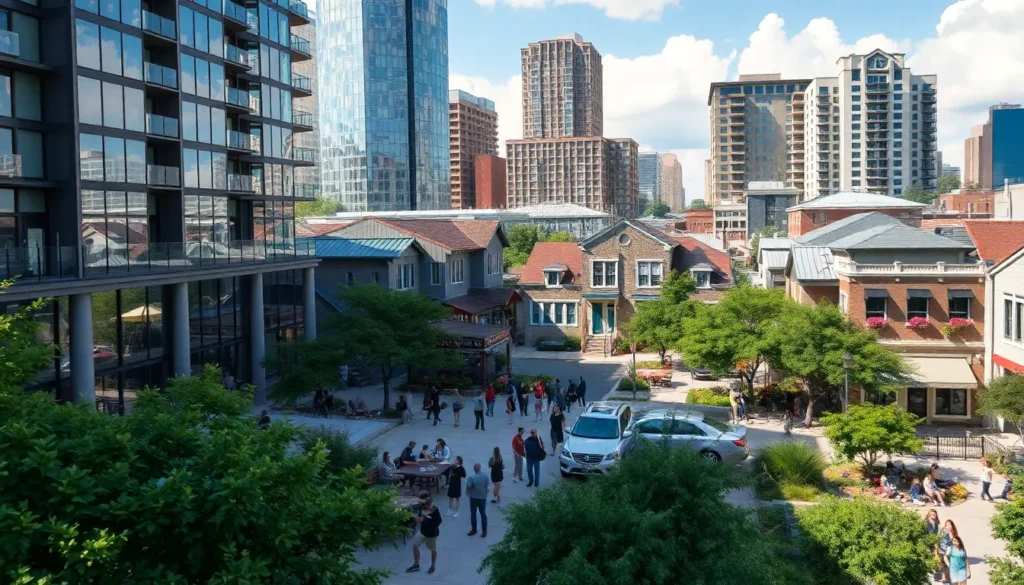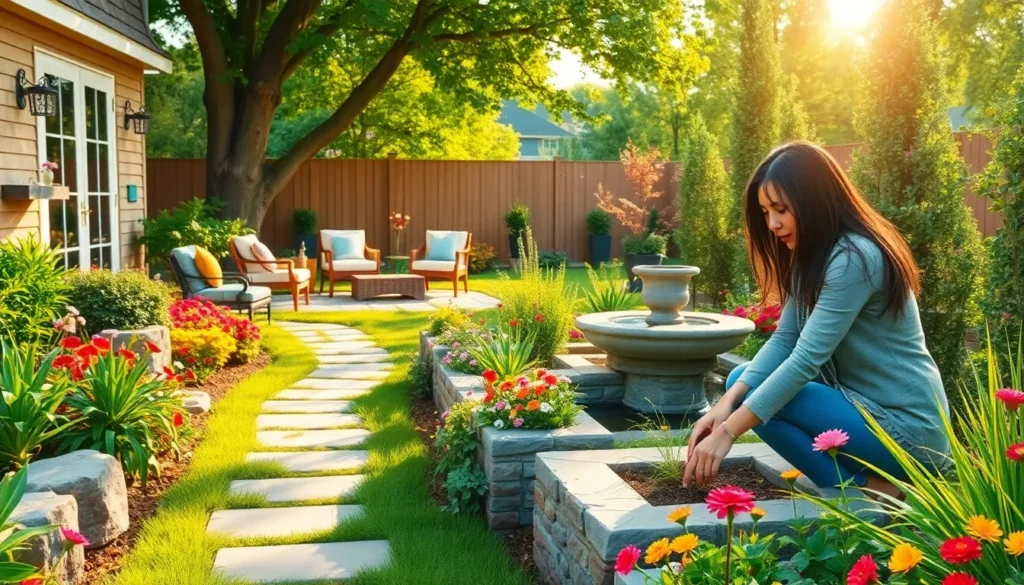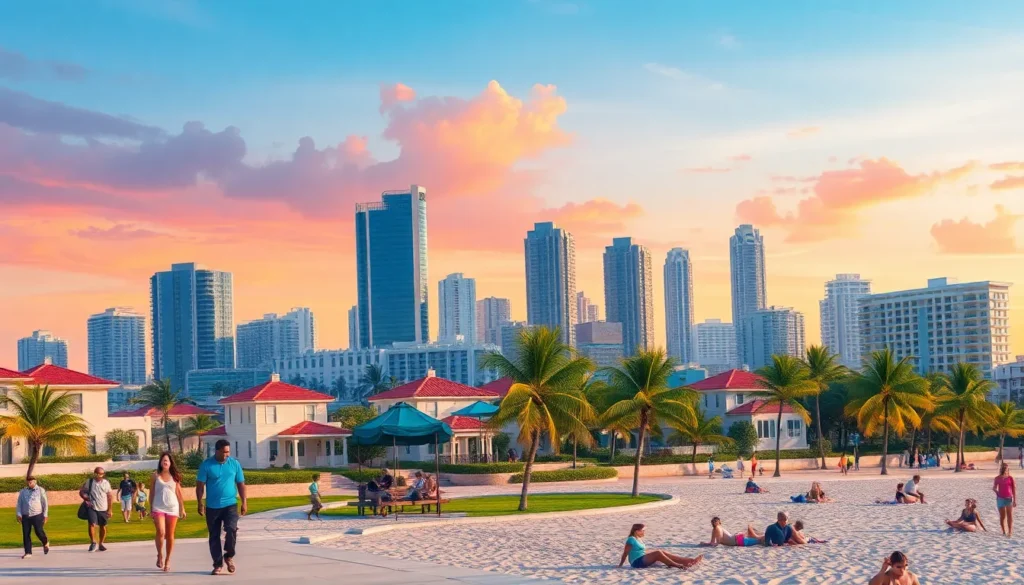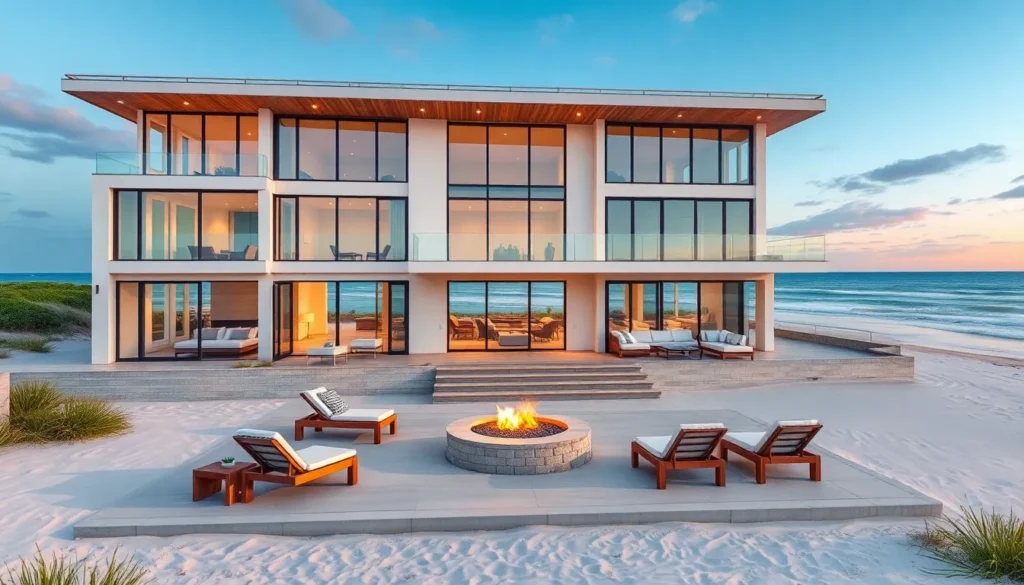Austin’s real estate market is hotter than a Texas summer, and if you’re not paying attention, you might just miss the next big opportunity. With its vibrant culture and booming tech scene, this city has become a magnet for homebuyers and investors alike. From quirky bungalows to sleek downtown condos, there’s something for everyone—if you can snag it before it’s gone!
Current Market Trends in Austin Real Estate
Austin’s real estate market remains robust, driven by an influx of new residents and a thriving tech sector. Buyers and investors must navigate shifting dynamics to make informed decisions.
Home Prices and Trends
Home prices in Austin currently reflect a competitive environment. The median home price stands around $550,000, signaling a substantial increase over the past year. Many neighborhoods experience rapid appreciation, especially those near tech hubs. Condos in downtown areas typically see higher price tags, with averages nearing $700,000. Additionally, historical data reveals consistent year-over-year growth, emphasizing the area’s appeal. As interest rates fluctuate, prospective homebuyers may find opportunities in less sought-after segments.
Inventory Levels and New Listings
Inventory levels remain tight, limiting choices for buyers. Recent statistics indicate a mere 1.5-month supply of homes available on the market. New listings have increased slightly, with approximately 1,200 properties hitting the market monthly. However, the demand often outpaces supply, leading to bidding wars in popular neighborhoods. Sellers, encouraged by rising prices, tend to price homes competitively to attract multiple offers. The combination of low inventory and increasing demand results in a fast-paced market, necessitating quick decisions from buyers.
Notable Developments in Austin
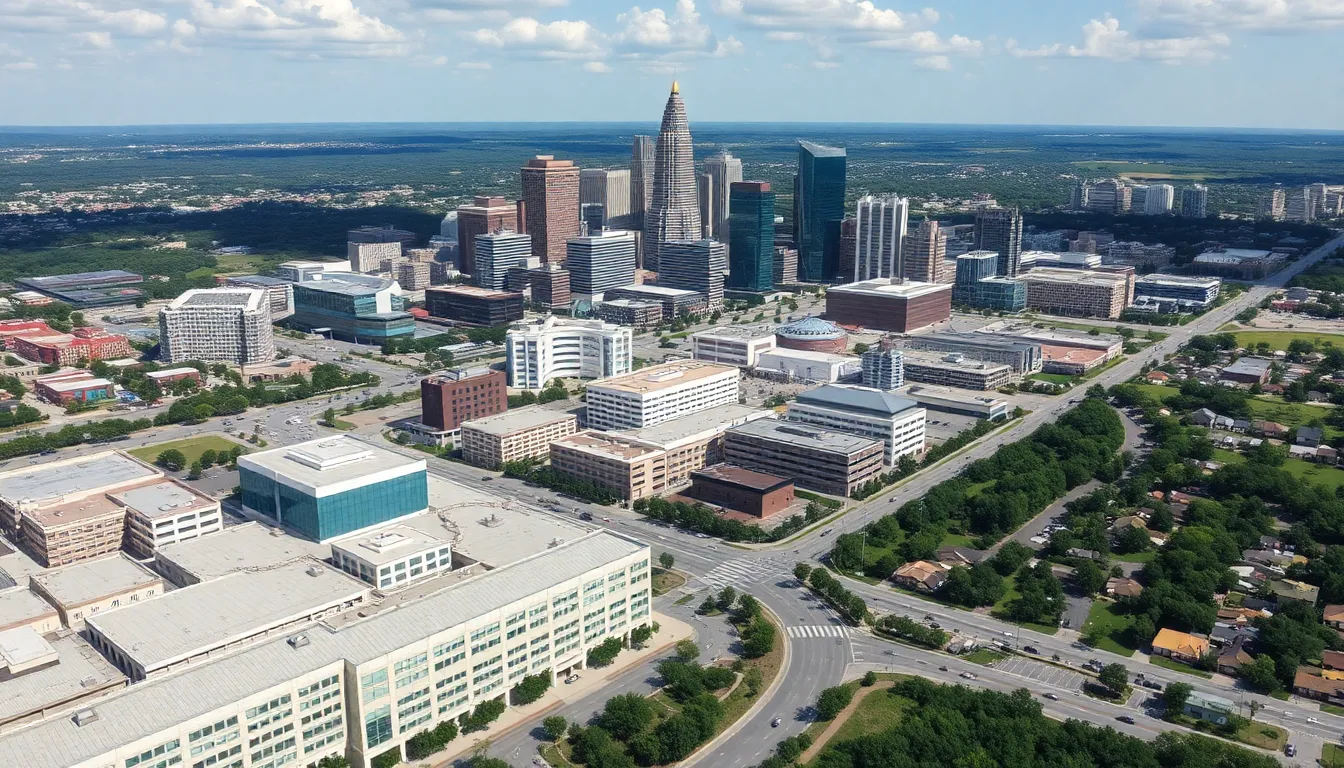
Austin’s real estate landscape features significant changes that reflect its growing popularity. Noteworthy projects are under development, shaping the city’s future.
Major Commercial Projects
Several major commercial projects in Austin are redefining the business environment. The Domain, a mixed-use development, attracts tech firms, retail shops, and dining options, contributing to economic growth. Another landmark includes the new Dell Medical School complex, which bolsters healthcare innovation. Additionally, the Austin-Bergstrom International Airport expansion aims to enhance travel capacity and accommodate increasing visitor numbers. With these projects, stakeholders witness sustained interest from investors and businesses alike, impacting the overall economic landscape.
Residential Community Expansions
Residential community expansions continue to accommodate the influx of new residents. Several planned neighborhoods, including Easton Park and Whisper Valley, focus on sustainability, offering eco-friendly housing options. Developers prioritize diverse price points to cater to various buyer segments. Additionally, the recent surge in townhome constructions addresses the demand for more affordable living spaces in competitive areas. These expansions demonstrate the commitment to creating inclusive communities, driven by the city’s robust growth trajectory.
Factors Influencing the Market
Several key factors are influencing Austin’s real estate market, reflecting its dynamic environment.
Economic Growth and Job Opportunities
Economic growth drives demand in Austin’s real estate sector. The tech industry plays a significant role, with numerous companies establishing headquarters in the area. High-paying job opportunities attract skilled professionals seeking residences. Major employers, including Dell and Apple, contribute to job stability and expansion. Local universities produce a highly educated workforce, further bolstering the economy. Consequently, this influx of jobs fuels home purchases and investments.
Population Growth and Migration Patterns
Population growth significantly impacts Austin’s housing demand. Over the past decade, the city has welcomed thousands of new residents, reflecting its vibrant lifestyle and economic prospects. Migration patterns indicate an influx from states like California and New York. Many newcomers search for affordable housing, increasing competition among buyers. Neighborhoods that appeal to newcomers experience particularly high demand, often resulting in rising home prices. The current inventory can’t keep pace with the number of people wanting to relocate, creating a sense of urgency in the market.
Predictions for the Future
Austin’s real estate market shows signs of continued growth, influenced by various economic and demographic trends. Observers anticipate shifts in buyer behavior and construction activity over the next few years.
Short-Term Forecasts
In the immediate future, the market may experience further bidding wars due to limited inventory. Buyers should anticipate competition, particularly in popular neighborhoods, as available properties often attract multiple offers. Median home prices could reach $570,000 by the end of the year based on current trends. Expect new listings to trickle in gradually, yet demand is likely to outpace supply, which adds urgency for potential buyers. Projections indicate that downtown condos might average around $720,000 as desirability increases. Markets evolve, and Austin remains a sought-after destination despite the challenges.
Long-Term Projections
Looking further ahead, Austin’s real estate landscape may expand significantly, driven by ongoing economic growth. Major employers, particularly in tech, are expected to bolster demand for housing. Population increases from migration will likely continue, especially from states with high living costs. Expectations suggest that home prices may rise by 20% over the next five years, prompted by escalating demand and limited new construction. Development projects are anticipated to gain momentum, addressing the need for diverse housing options. Overall, a vibrant real estate environment in Austin is on the horizon as it adapts to demographic and economic shifts.
Austin’s real estate market is poised for continued growth and transformation. The combination of a thriving tech industry and an influx of new residents creates a vibrant landscape for homebuyers and investors alike. As demand continues to outpace supply, quick decision-making will be crucial for those looking to secure a property.
The city’s commitment to sustainability and diverse housing options ensures that it remains an attractive destination. With ongoing developments and a competitive environment, Austin’s real estate scene is set to evolve, reflecting the dynamic nature of its economy and population. Staying informed about these trends will empower potential buyers to navigate this fast-paced market effectively.

